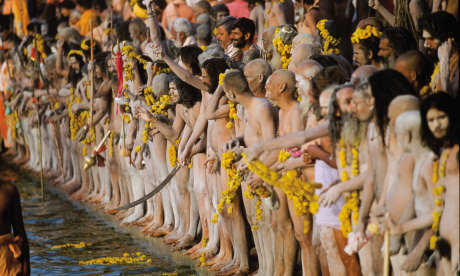
They draw the eye, link subjects and add drama – shooting diagonals can properly pep up your photography, reckons Steve Davey
A photo should be more than just a simple rendering of reality. It should convey some meaning to the viewer; it should elicit a response or be visually stimulating. The key to making your pictures work on a deeper level is through composition: rather than just snapping away, pause and try to create something a little more thoughtful.
A useful compositional device is including a strong diagonal. These can be used to lead the onlooker’s eye into a detail, to link objects together or just to create a more graphic image.
At its simplest, a diagonal provides an alternative way to view the world. When capturing something such as the facade of a building, instead of shooting it square-on from the front, try moving to one side and photographing it from an angle. This will cause the straight lines to appear to recede and converge, forming a strong diagonal.
I’m a great believer in exploiting photographic characteristics to produce an image that could only be created with a camera – one that couldn’t be seen with the human eye. Bending perspective to create diagonals is a perfect example of this.
The intensity of any diagonal will vary depending on the angle you shoot from and the focal length of your lens. A wide-angle lens will create a more extreme, converging diagonal; a telephoto lens will give a less pronounced effect, with a flattened perspective. A telephoto lens will also give a shallower depth of field, allowing you to isolate a part of the subject.
Sometimes a strong diagonal is actually present in the subject – all you have to do is alter your crop or your position in order to bring it out. Whether it is the strong slope of a hill or a road leading off into the distance, the resulting diagonals can be used to lead the eye or create a strong graphic effect.
Shooting all of these Sadhus (above; during the Juna Akhara) from the side has given to a strong diagonal that leads the eye to the point of focus and the grinning holy man with the sword. It has also created an image that shows a mass of people filling the frame – and in this instance avoiding some of the problems of a full frontal approach!
A diagonal can lead the eye towards the picture’s main subject (as with the image above and the happy man wielding a sword). This style of composition can also bring extra meaning to an image, as it highlights the contrast.
Introducing a diagonal is often a case of noticing an existing shape, then adjusting your focal length and crop to make it prominent in your image. Some subjects can form a strong diagonal that it's easy to accentuate by cropping out as many extraneous subjects as possible.
“When is a diagonal not a diagonal?" When it’s a curve!
A curve can be just as effective at leading the viewer’s eye into the picture. The shape can create a dynamic composition and tie the various elements in an image together.
If you shoot from the side, you can also use a wide aperture to give a shallow depth of field to your image. This isolates a part of the image’s detail, makes it clearer what it is, and also gives a suggestion of how the detail is repeated. This makes the image less confusing.
It’s not too complicated: you can often create a strong diagonal simply by walking to one side of something and shooting at an angle – don’t always opt for the obvious position.
If you are shooting a diagonal with a shallow depth of field you will have to control which part of the image is in focus; do this by moving the camera’s focus point over the part of the scene you want to be sharp.
The nature of diagonals will vary depending on whether you are using a wide or a telephoto lens. An 18-200mm lens is a perfect travel lens, as you always have the right lens on your camera and never have to change it.